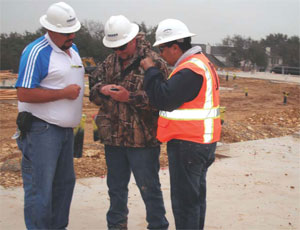Construction firms are discovering that monitoring and analyzing safety observations collected electronically can improve safety by identifying hazards and taking action to eliminate problem areas.


“We’re trying to drive all incidents to zero,” says Cindy L. DePrater, vice president and corporate director of safety and loss control for Turner Construction Co. in Dallas. “If we know what we should be looking for out on the job, we can focus in on that, and we can prevent an accident or incident from occurring.”
Turner has collected more than 10 million observations and has noted a 51% drop in recordable incidents and a 39% decrease in lost work days since starting to use DBO2 SafetyNet software in 2004.
“If you want to improve your safety culture, you have to have something you can trend and track from,” DePrater adds. “The more data and information you can use from your own company, the better you can get.”
Jordan Construction in Dallas also uses SafetyNet, tracking safety and quality information with it for the past five years and has collected about 1.5 million observations.
“You take a subjective process, like safety, and apply a database and software mentality to it, and you can create objectivity,” says Patricia Kagerer, vice president of risk/safety management at Jordan. “Instead of having paper in drawers no one looks at, the information is loaded into a database, and we can determine where we are doing well and where we need to improve.”
Management can drill down, using real time data, to assess project, division, superintendent or overall performance. Training and safety resources are deployed to address those specific areas. Kagerer says SafetyNet provides consistency and the ability to make comparisons, and she attributes some of the company’s improved safety rates to using the software. However, she did not have specific percentages.
Don Fisher, Southwest regional safety manager for Gilbane Building Co. in Houston, says SafetyNet “has made our field supervision more accountable in the field when it comes to safety.”
The superintendent then can take action on issues he or she finds on that job site. Gilbane engineers and project managers also use it.
“The more people you have looking at safety, the less problems you are going to have,” Fisher says. “It’s a very good analytical tool.”
Fisher piloted the software in 2002 and he says now more than 2,000 Gilbane employees throughout the company use it on a regular basis.
Austin Industries in Dallas began using SafetyNet about five years ago nearly exclusively by safety officials. Austin Commercial has now expanded data collection to project managers, field superintendents and the engineering staff. The expectation is each person will look at 20 different items during each walk through.
“We find there is a little different perspective by everyone,” says P.D. Frey, corporate safety, health and...


Post a comment to this article
Report Abusive Comment